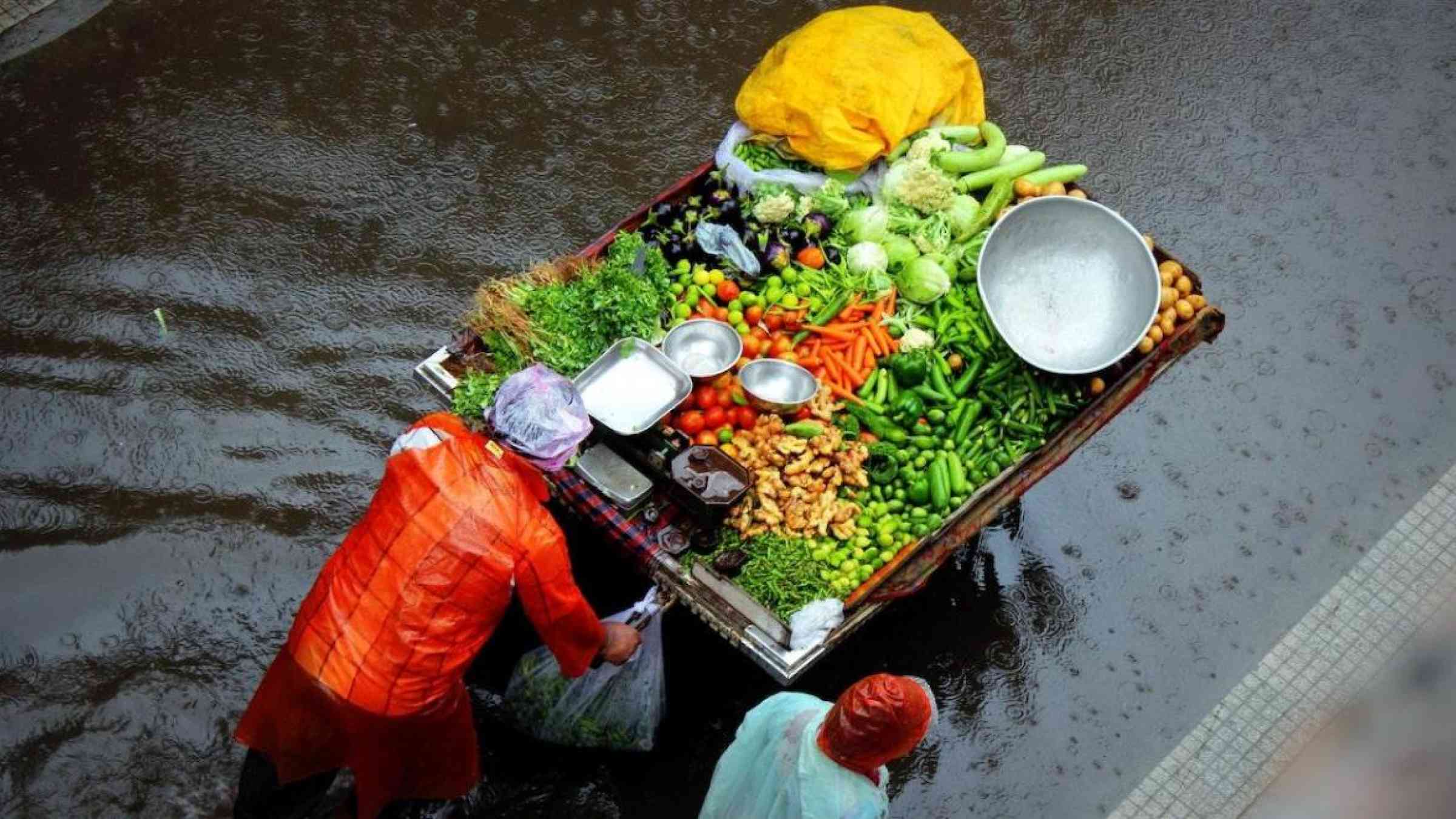COVID-19 shapes a new riskscape: Climate resilience is the way forward

The last few months have seen the collisions of COVID-19 with climate extremes. Its impact is potentially inter-generational where poverty, disaster risks and environmental degradation converge, especially in multi-hazard risk hotspots such as South Asia. The recent ESCAP policy study on protecting the vulnerable from climate and COVID-19 in South Asia maps out the cascading risk scenarios of climate extremes emanating from the South West monsoon and its intersection with the rapidly spreading COVID-19 pandemic. The study presents innovative solutions different from managing risks in the normal disaster situation, to address critical vulnerabilities of cascading risk.
The intersection of COVID-19 with climate extremes is driving the cascading risks and reshaping the riskscape in the subregion. With this background, a risk management framework is outlined to address these cascading risks:
Understanding the Riskscape of Natural Disasters and Epidemics/Pandemics
The Asia-Pacific Disaster Report highlights that climate risk occupies 85 per cent of the riskscape and holds the key for building a resilient future of Asia and the Pacific. The riskscape, however, does not include biological risks, especially those transmitted through communicable water and vector-borne diseases. Increases in endemic diseases and the risk of outbreaks are dependent upon many factors that must be systematically evaluated with a comprehensive risk assessment. This allows for prioritization of interventions to reduce the impact of communicable diseases.
Understanding the nexus of epidemics/pandemics with climate extremes is inadequate at the policy and institutional levels. In epidemics that emerge as a result of natural hazards i.e. floods increase the risk of malaria/cholera, response has predominantly tilted towards specialized health sector interventions. As a result, the health aspects of disaster risk are dealt with more in terms of epidemic response rather than addressing the root causes of risks and associated vulnerabilities.
A composite riskscape that includes both disaster and health attributes helps address the gaps in understanding cascading risks while bringing policy coherence and integrated response across key sectors. For example, hazards of extreme events, socio-economic vulnerabilities and environmental degradation are a root cause of biological risks. About 25 per cent of death and disease globally are attributed to this root cause. There are a set of indicators related to land cover, water quality, sanitation and urban settlements which capture the intersection of disaster and epidemic risks. However, there is not yet a scientific understanding on the nexus between disasters and pandemics, specifically on COVID-19. A composite riskscape helps support policy responses to develop risk informed health services and critical health infrastructure in disaster risk hotspots.
Intersection of Pandemics with Extreme Events
As of 7 July, India had the third-highest number of COVID-19 cases in the world, at more than 700,000—topping the list in the Asia-Pacific region. The speed of COVID-19 spread in recent days is worrisome as more than 70 per cent of confirmed cases and deaths were reported during the last month. The ESCAP policy study presents how South Asia faced a ‘crisis on top of crises’ – COVID-19 intersecting with cyclone Amphan in the Bay of Bengal, Cyclone Nisarga in the Arabian Sea, floods in Assam, India, and desert locust affecting South-West Asia.
The biggest challenge was managing the unavoidable trade-off between emergency response and outbreak containment. Despite an accurate early warning followed up by evacuation of three million at-risk populations in Bangladesh and India, 59 members of India’s National Disaster Response Force and 170 personnel who fought against cyclone Amphan tested positive for COVID-19. In such cascading risk scenarios, a localized outbreak is inevitable and requires innovative strategy for emergency response without spreading COVID-19 in the context of critical vulnerabilities. By using the consensus seasonal forecast of the 2020 Southwest monsoon period in conjunction with socio-economic vulnerabilities, ESCAP presented cascading risk scenarios to enable targeted and integrated policy interventions for protecting vulnerable communities.
Climate Resilience is the way Forward for Managing Cascading Risks
The scientific understanding of shifts in water and weather patterns influencing the life cycle of the pathogens or vectors is well-understood. It helps establish the links between climate change, monsoons and vector-borne diseases. Climate change is driving these links. The Asia-Pacific Disaster Report 2017, for example, forecasted an increase in flood losses due to changes taking place in monsoon patterns. Under the moderate and severe climate change scenarios, the transboundary flood losses will be 2 to 6 times greater in the Ganga-Brahmaputra and Meghna basin; 1.5 to 5 times in the Indus basin; and 1.2 to 2 times in the Mekong basin. These are the risk hotspots where climate change and monsoon will trigger mosquito-borne diseases such as malaria and dengue. It is too early to understand the impact of the monsoon on COVID-19, as knowledge about the new virus is still evolving.
As cascading risks emerge as the new normal, we need knowledge-based solutions. COVID-19 is shaping a new riskscape. While scientific uncertainties rely on understanding the disaster and pandemic nexus, climate resilience is key to a resilient future of Asia and the Pacific.